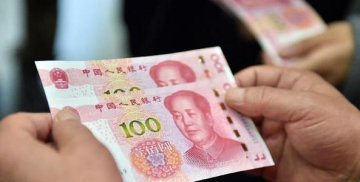
Bets are mounting that China’s currency will slide to a level not seen since the global financial crisis, as the government tries to shield the economy from a trade war.
The notional value of new options betting the yuan will weaken past the psychological milestone of 7 per dollar is at the highest since depreciation pressure really began to pick up in June. Last week saw more wagers added than in mid-August, when the currency hit a 19-month low and authorities used verbal warnings and stronger fixings to deter speculators. Bears are also acting in the forwards market, where the offshore yuan’s 12-month outright contracts slid past 7 for the first time in over a year.
The currency, one of Asia’s worst performers this year, is under renewed pressure as China reacts to the trade war threat and the country’s monetary policy diverges from the U.S., where interest rates are on the rise. China’s central bank said Sunday it would cut the reserve requirement ratio, which typically weakens the exchange rate. When trading resumed following a week-long holiday, the yuan slid 0.8 percent. It closed at 6.9260 per dollar Tuesday.
Bank of America Merrill Lynch and JPMorgan Chase & Co. are among the global banks to have lowered their yuan forecasts, predicting it will hit 7 versus the greenback within six months. That’s a level it hasn’t reached in more than a decade, because the government -- wary of capital outflows -- hasn’t allowed it to.
When the yuan edged toward 7 in August, the People’s Bank of China arrested the decline by making it more expensive to bet against the currency, while also setting the daily reference rate stronger than forecast for an extended period. In early 2017, when the exchange rate was about 0.5 percent from that level, the government engineered a dramatic liquidity squeeze to burn bears.
“China may find yuan hitting 7 more acceptable now, because it’s prioritizing looser liquidity over a strong exchange rate and it’s less concerned with fund outflows thanks to capital controls,” said Tommy Xie, an economist at Oversea-Chinese Banking Corp Ltd. in Singapore. “However, a break of the level will likely trigger faster drops in the yuan and hurt stocks, so we could see more intense official management at that point.”
New yuan put options, which provide the right to sell the currency, with a strike price of 7 or weaker totaled $12.5 billion in the five days ending Oct. 5, compared with $4.9 billion the previous week, according to Bloomberg calculations based on data from Depository Trust & Clearing Corp. Options prices show the chances of the yuan hitting 7 by the end of March jumped nearly 10 times since mid-June to 40 percent.
The offshore yuan’s 12-month forwards, reflecting traders’ bets on the currency in the coming year, tumbled as low as 7.0582 per dollar Monday -- the weakest since May 2017. The onshore yuan’s one-year non-deliverable forwards also fell beyond 7 this week.
The PBOC still has tools to arrest the yuan’s slide, from outright dollar sales to squeezing offshore liquidity. Indeed, there are already signs of tightening: one-month interbank borrowing costs in Hong Kong spiked on Tuesday to the highest since June 2017.
“I remain cautiously bearish on the yuan, but I think the path to 7 will be a bumpy one,” said Stephen Innes, Singapore-based head of Asia Pacific trading at Oanda Corp. The PBOC has “a massive war chest to right the ship.”
Here are some of the factors aggravating the yuan’s weakness:
1. The PBOC has lowered the RRR for a fourth time this year
2. The yield spread between China and U.S. 10-year government bonds is the narrowest since April 2011, making yuan assets less appealing
3. China’s foreign-exchange reserves shrank the most since February last month. The drop was bigger than every forecast in a Bloomberg survey of economists
4. Relations between the U.S. and China appeared to deteriorate during Secretary of State Michael Pompeo’s recent visit to Beijing. He said there was “fundamental disagreement” with China’s foreign minister
5. Chinese stocks tumbled the most since June on Monday. Foreign investors sold $1.4 billion of mainland-listed shares through exchange links with Hong Kong
6. Overseas investors last month increased holdings of Chinese bonds at the slowest pace since March
7. China has a potential headache right ahead, as Washington weighs whether to name the country a currency manipulator in a report next week. That would probably be a surprise, but a senior U.S. Treasury official said Monday the Trump administration is concerned about the yuan’s weakness.
While China may try to stabilize sentiment before the U.S. decision, trade tension and the PBOC’s easier monetary policy will continue to drag the yuan, according to Claudio Piron, co-head of Asia foreign-exchange and rates strategy at BAML. The pace of the descent is more important than the level the yuan reaches, he said.
There’s a limit to how much depreciation Beijing will stand, because too much weakness “will jeopardize China’s plan to internationalize the yuan and open up the bond market,” Piron said.
Source: Bloomberg
Translated by Coral Zhong




















Latest comments